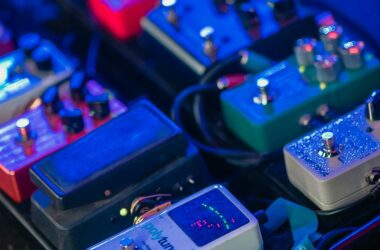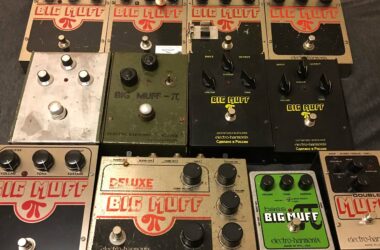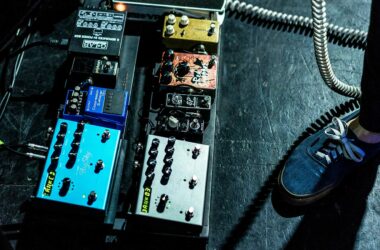When we think of jazz guitar, we often imagine a clear, neutral sound that’s warm and full of nuance, without necessarily associating it with a pedalboard. Yet effects pedals can be formidable allies when it comes to enriching your playing: subtle layers of reverb, a light boost for a solo, gentle modulation to bring relief…
Whether you play traditional jazz, bebop, modern jazz or jazz fusion, there are pedals perfectly suited to color your sound without distorting it. Here’s a selection of 15 pedals ideal for jazz, from the most transparent overdrives to subtle modulation effects, elegant boosts and quality reverbs.
The 15 essential pedals for jazz
Yesterday Effects Defiant Jazz
traditional and modern jazz
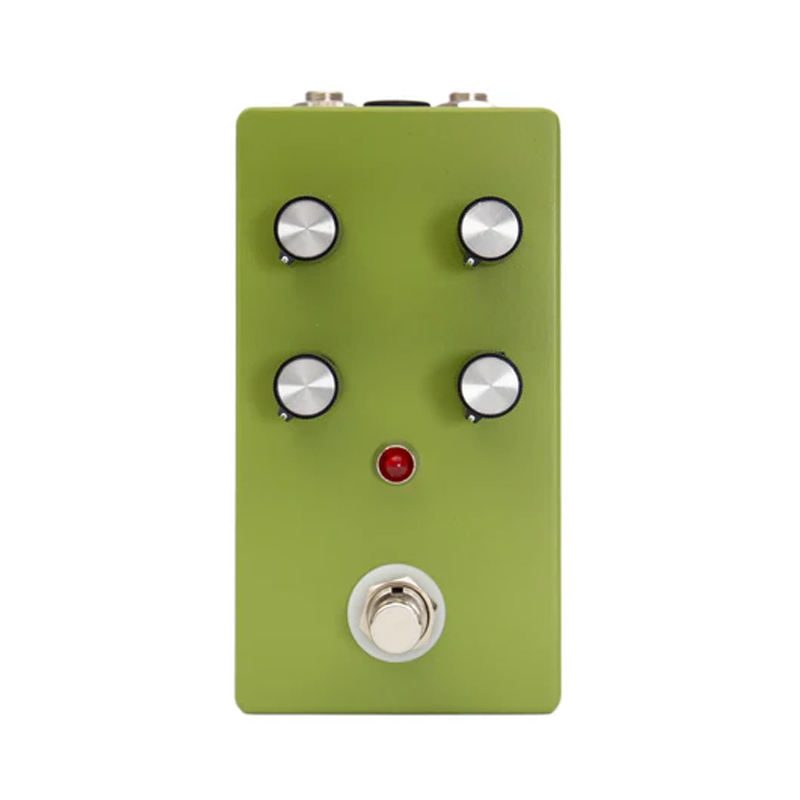
Inspired by the legendary Roland JC-120 amp, this pedal reproduces the famous crystal-clear clean associated with jazz. It incorporates the characteristic chorus and reverb, all in a compact format. Ideal if you’re looking to recapture that cult sound without carrying around an imposing combo.
Boss SD-1W Super Overdrive Waza Craft
to enhance solos without crushing the sound
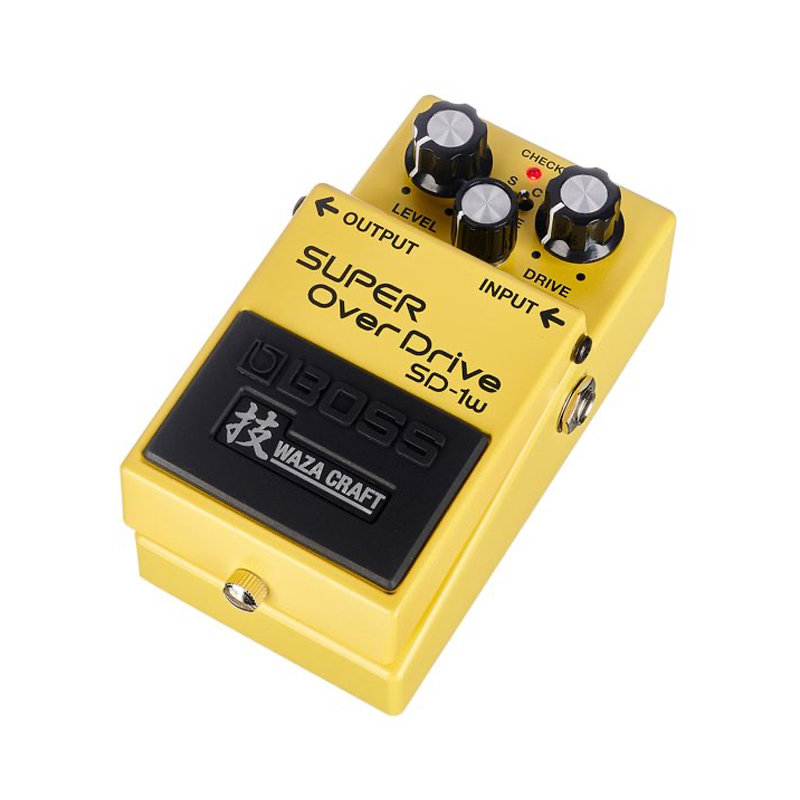
The SD-1W, the top-of-the-range “Waza Craft” version, doesn’t just “heat up” the sound: it accentuates the midrange and offers a highly dynamic response to the attack. It’s ideal for guitarists who want an expressive, lightly colored sound, perfect for solos that need to break through the mix without losing the roundness of jazz.
Diamond Vibrato
intimate solos and soaring passages
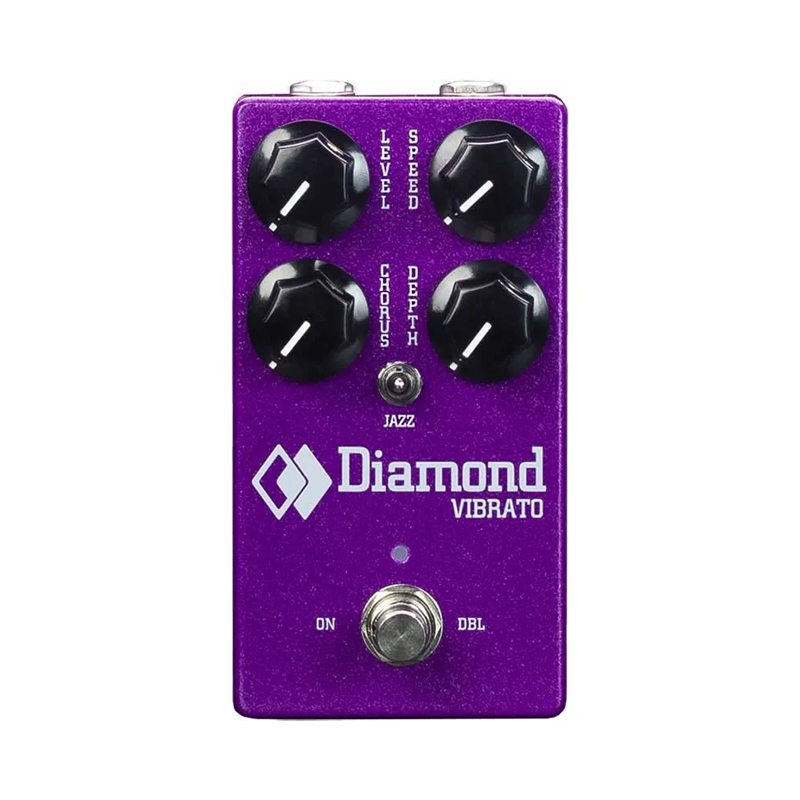
A gentle, musical vibrato that can transform a simple melodic line into a veritable sonic journey. Used sparingly, it enriches choruses and lends an expressive color akin to a Hammond organ. In modern jazz, it brings an almost “vocal” dimension to playing.
Tone City Big Rumble
tight budgets, jazz-blues play
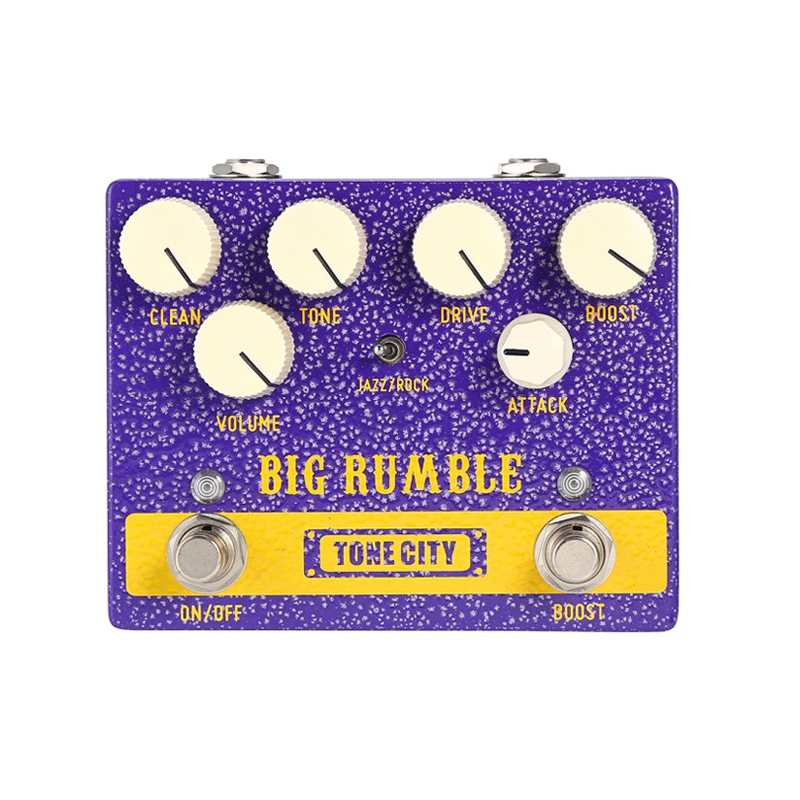
An affordable pedal that works as both a boost and a light overdrive, with a jazz mode. It adds a little warmth and sustain without altering the guitar’s character too much. Ideal for jazz guitarists who want to try out a discreet first effect on a small budget.
Xotic Allen Hinds AH Booster
make solos shine and gain presence
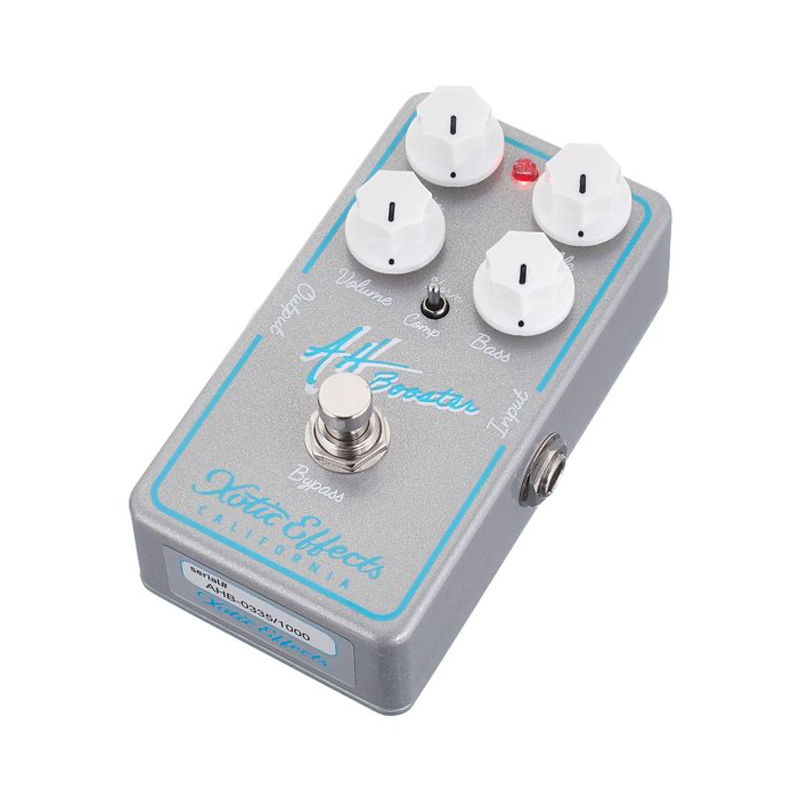
This booster is designed to highlight the guitar without coloration. Unlike Soul Food, which adds a slight brightness, the AH Booster fully respects the timbre of the instrument and is used above all to give volume and sustain to solos, with plenty of headroom.
Mad Professor Sweet Honey Overdrive
adds natural, expressive warmth
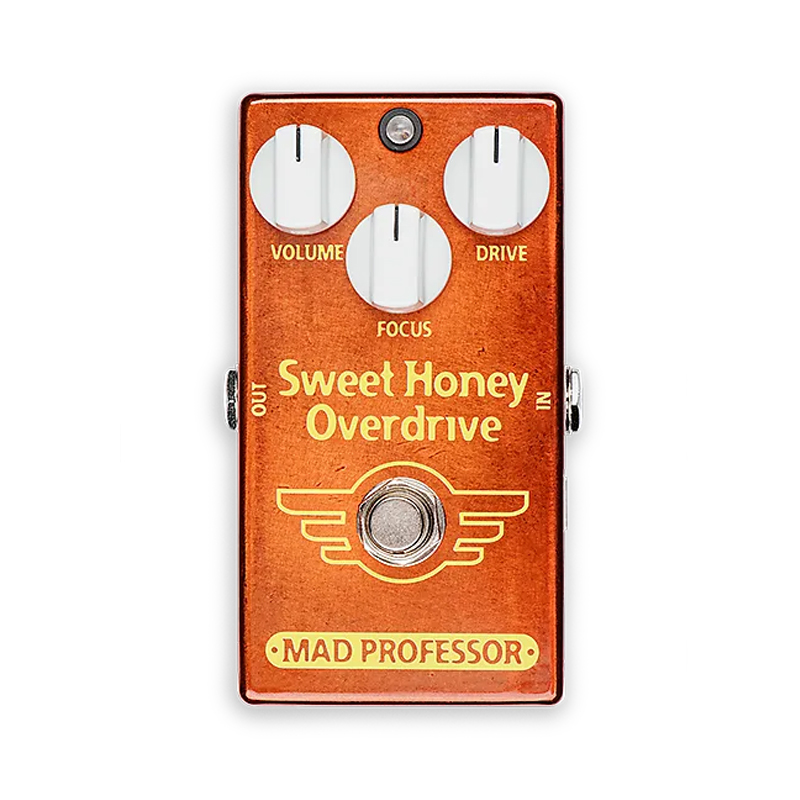
Where the SD-1W emphasizes midrange, the Sweet Honey excels in responsiveness to touch. The louder you play, the more it opens up. This sensitivity makes it a very organic pedal, which respects the nuances of jazz playing, from gentle comping to more sustained phrases.
Warm Audio Jet Phaser
for jazz fusion and atmospheric ambiences
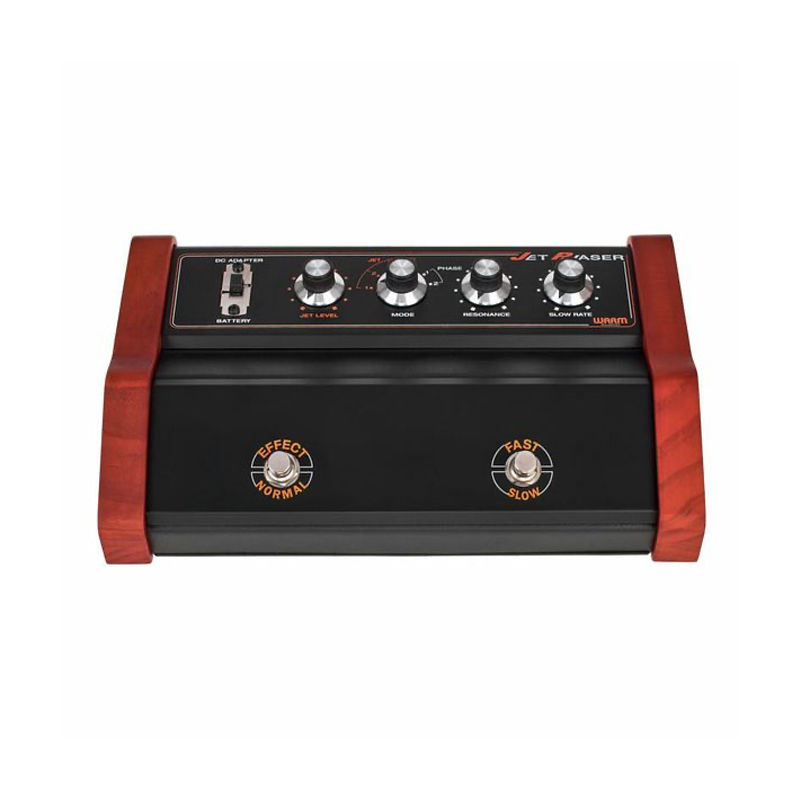
The vintage phaser par excellence. Used by funk and fusion musicians, it can also be used in jazz to add movement to chords and create a soaring ambience. In subtle mode, it adds a rhythmic dimension without distorting the playing.
NUX Steel Singer Drive Reissue
test a “Dumble” color without breaking the bank.
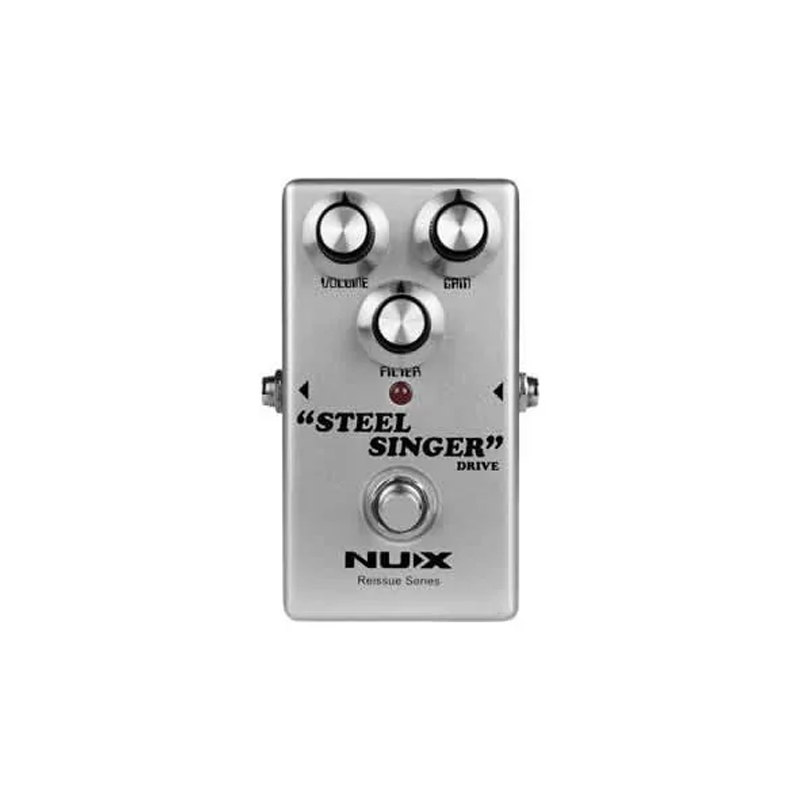
Inspired by the famous Dumble amps, this overdrive pedal offers smooth, singing overdrive at a very affordable price. Its tonal balance makes it ideal for enriched chords and melodic lines that need to retain their clarity.
Boss RT-2 Rotary Ensemble
organic ambiances, spiritual or modern jazz
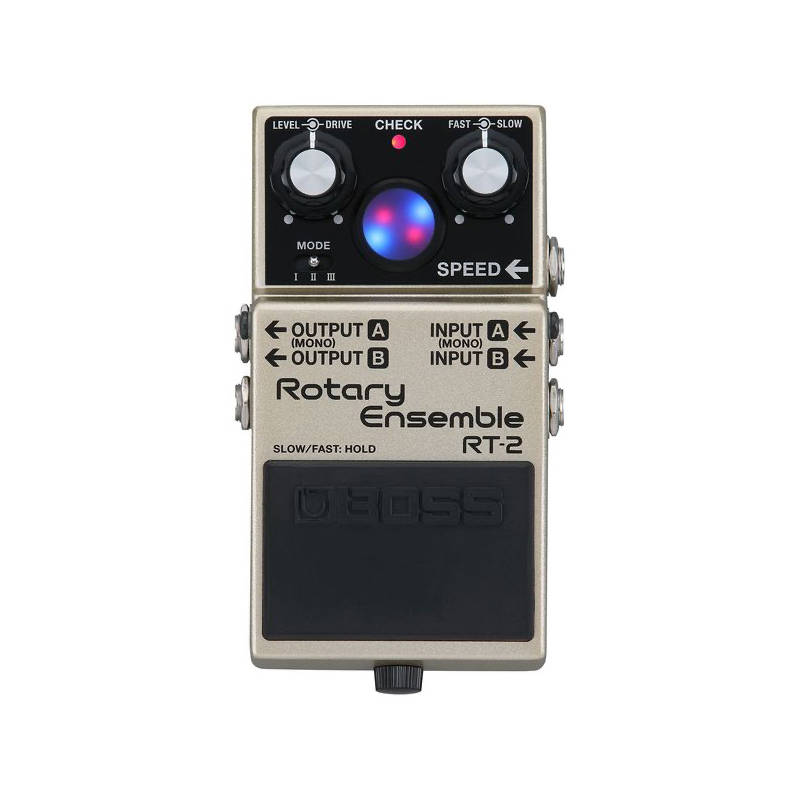
If you like Leslie sounds and a Hammond organ effect, this pedal is for you. Widely used in jazz and gospel, it creates a rotary motion that transforms the guitar into an almost organic instrument. A sure-fire way to give your accompaniments a strong identity.
Electro-Harmonix Soul Food
giving body to solos on a small budget
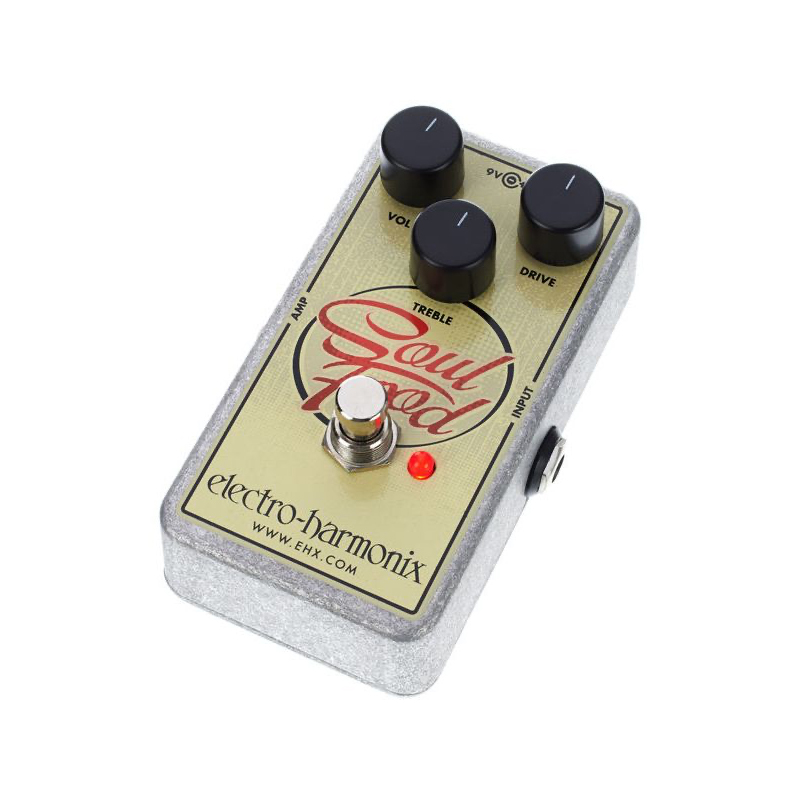
Inspired by the legendary Klon Centaur, Soul Food is a transparent overdrive that perfectly respects guitar grain. It doesn’t artificially inflate the midrange: it remains very transparent and acts like a sonic “polish”. It’s perfect if you want a discreet boost that enhances an already warm amp, without changing the guitar’s character.
Boss Blues Driver BD-2
jazz-blues, fusion, expressive playing
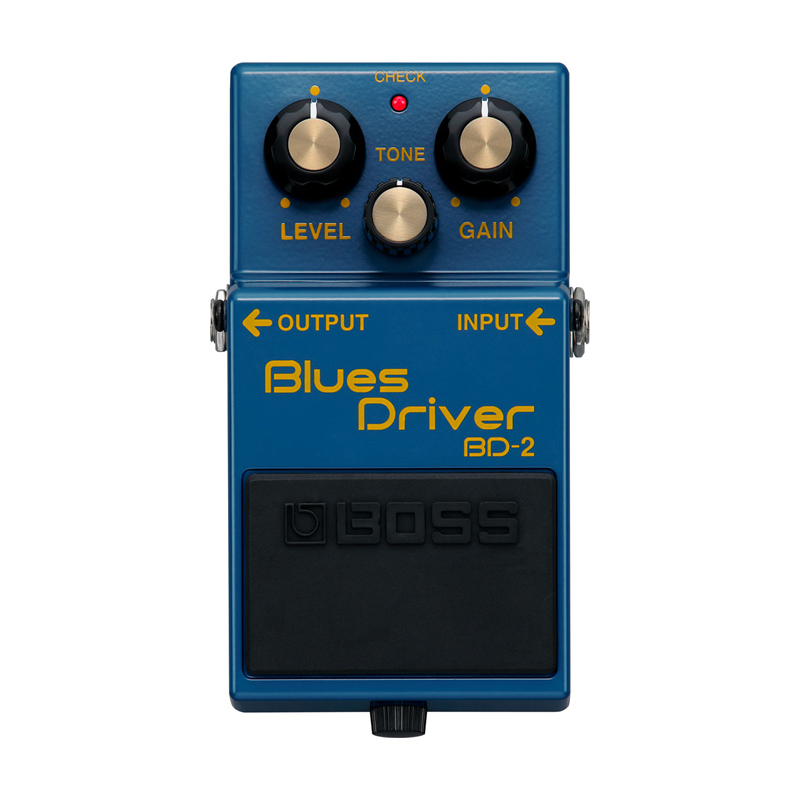
A Boss classic, the BD-2 brings a rawer granularity than the TS9. It can remain soft with low gain, but excels when you want a more nervous, blues-rock drive. In a jazz-blues or fusion context, it brings a slightly rough texture that contrasts with the smoother overdrives.
MXR Dyna Comp
homogenize play, especially in groups
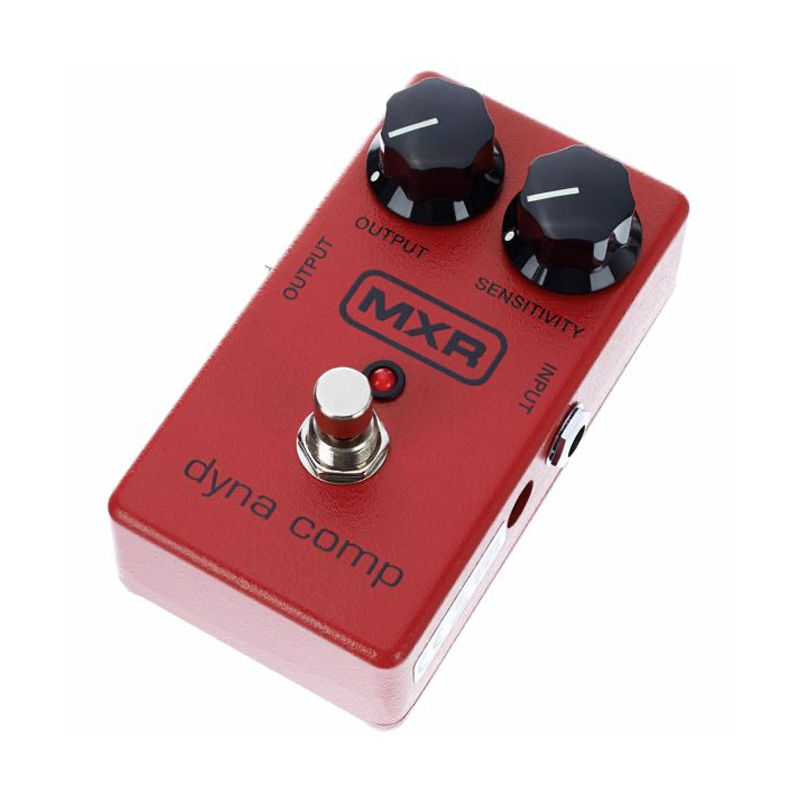
A great compression standard. In jazz, it balances volumes between chords and single notes, and brings a natural sustain to your notes (useful for solos). Used with subtlety, it preserves dynamics without “crushing” expression.
Strymon Flint
vintage ambiences and intimate ballads.
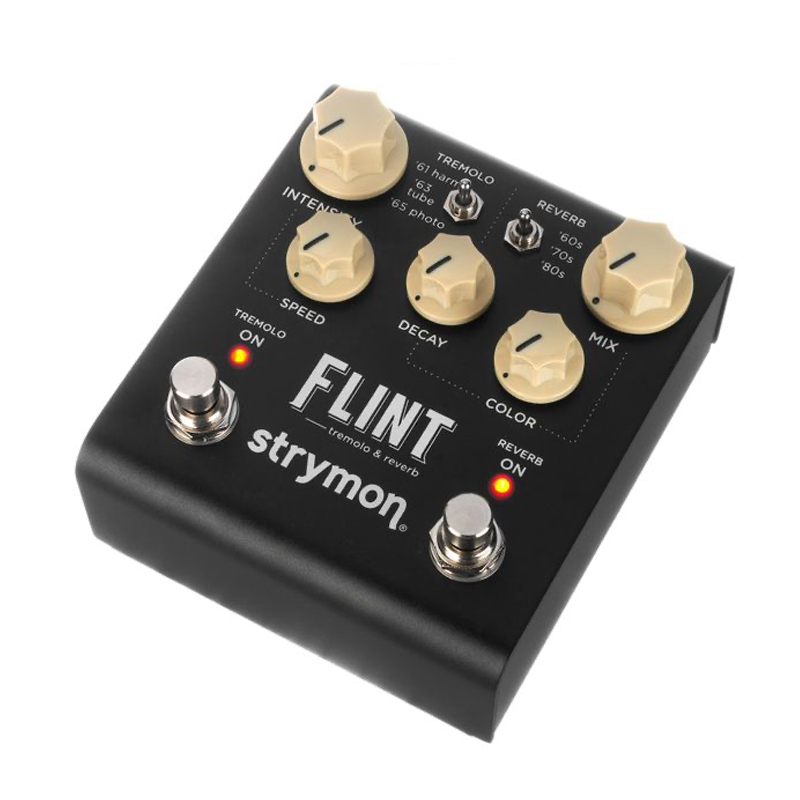
A high-quality reverb + tremolo, inspired by the vintage circuits of the 60s. The reverb adds depth and air, while the tremolo adds a subtle swing that may recall the great jazz recordings of the 50s and 60s. Highly appreciated for its natural, organic sound.
Ibanez TS9 Tube Screamer
singing solos, increased presence in the mix.
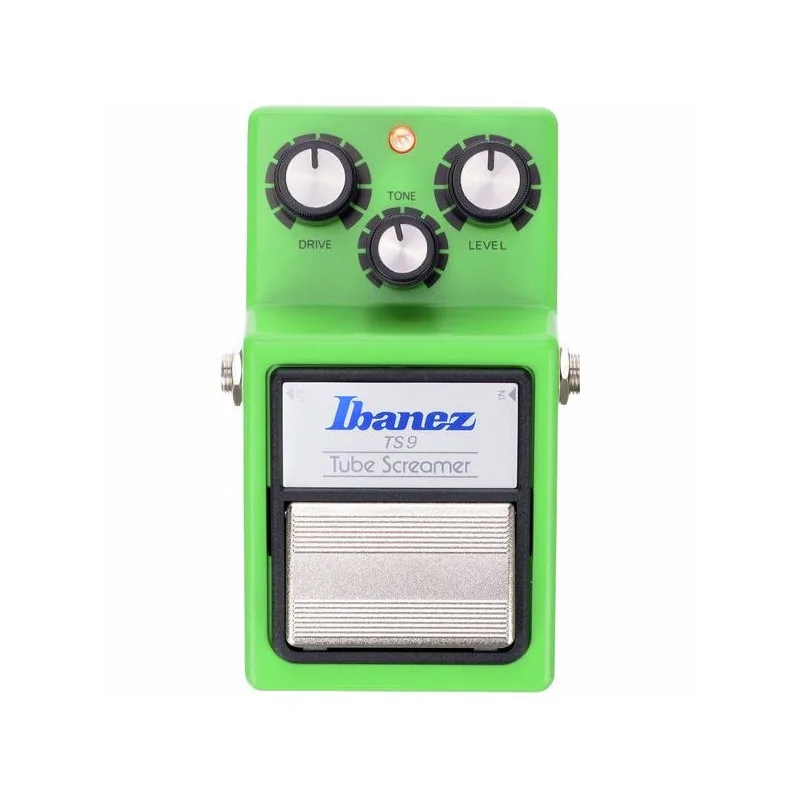
The TS9 is more pronounced than the Soul Food: its grain emphasizes the midrange, with a light compression that makes solos more singable. In jazz fusion or more energetic contexts, it helps cut through the mix while giving an immediately recognizable color.
Catalinbread Epoch Boost
brings warmth and depth to clean jazz.
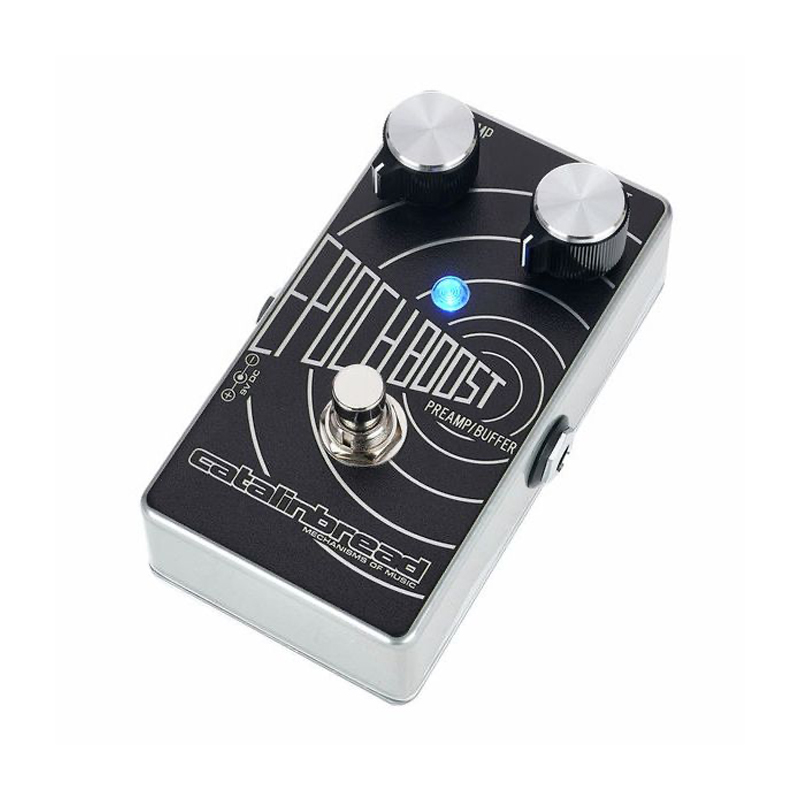
Inspired by the Echoplex preamp, the Epoch Boost doesn’t just amplify: it adds a slight vintage patina. This subtle coloration is reminiscent of analog recordings from the 60s and 70s, making it unique for adding depth and old-school character to a jazz sound.
FAQ – Pedals and jazz guitar
Do you have to use pedals to play jazz?
Not at all! Jazz is a style that relies above all on the guitarist’s playing, the instrument and the amp. Many of the great names (Wes Montgomery, Jim Hall, Kenny Burrell…) played without any effects at all. Pedals are therefore not indispensable, but they can broaden the sound palette and add interesting nuances, especially in modern jazz and fusion.
What are the most useful pedals for a beginner jazz guitarist?
To begin with, three types of effects are particularly recommended:
- A reverb (or light delay) to add depth.
- Gentle boost/overdrive for solos.
- A subtle modulation pedal (chorus, vibrato, phaser) to add color to the sound.
With this trio, you can already cover most situations without complicating your setup.
Which pedals to avoid in jazz?
As a general rule, anything that crushes the dynamics or distorts the sound too much should be handled with care. Over-aggressive distortion, extreme fuzz or very long, saturated delays can quickly blur the clarity of chords. Of course, nothing is forbidden per se: in fusion or experimental jazz, these effects can have their place.
How much to invest in a small jazz pedalboard?
A budget of €200 to €300 is enough to equip you with two or three good-quality pedals (e.g. a reverb, a soft overdrive and a chorus). For more experienced guitarists, switching to boutique pedals can bring more finesse and dynamics, but the price often rises to between €150 and €250 per pedal.
What’s the difference between a “traditional jazz” sound and a “jazz fusion” sound on the pedal side?
- Traditional jazz: we prefer a very clean, clear, warm sound, sometimes with a little reverb and a light boost for solos.
- Jazz fusion: more saturation, modulation and spatial effects. The sound becomes closer to rock or funk, while retaining the harmonic richness of jazz.
Does the order of the pedals matter?
Yes, the order has a big influence on the final result. A simple rule to start with:
- Boost / Overdrive
- Modulation (chorus, vibrato, phaser)
- Delay / Reverb.
But there is no absolute truth: some guitarists place their phaser before the overdrive, or the reverb at the very beginning of the chain for a more experimental sound.


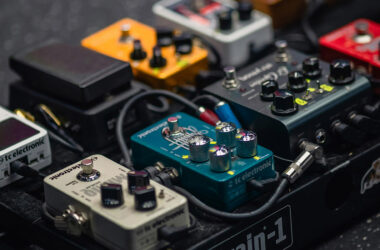

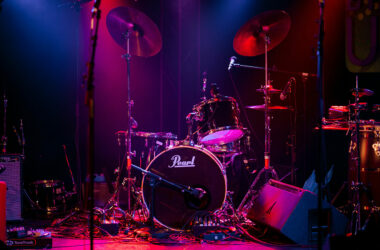
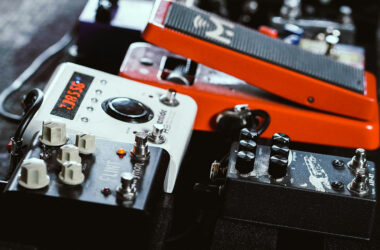
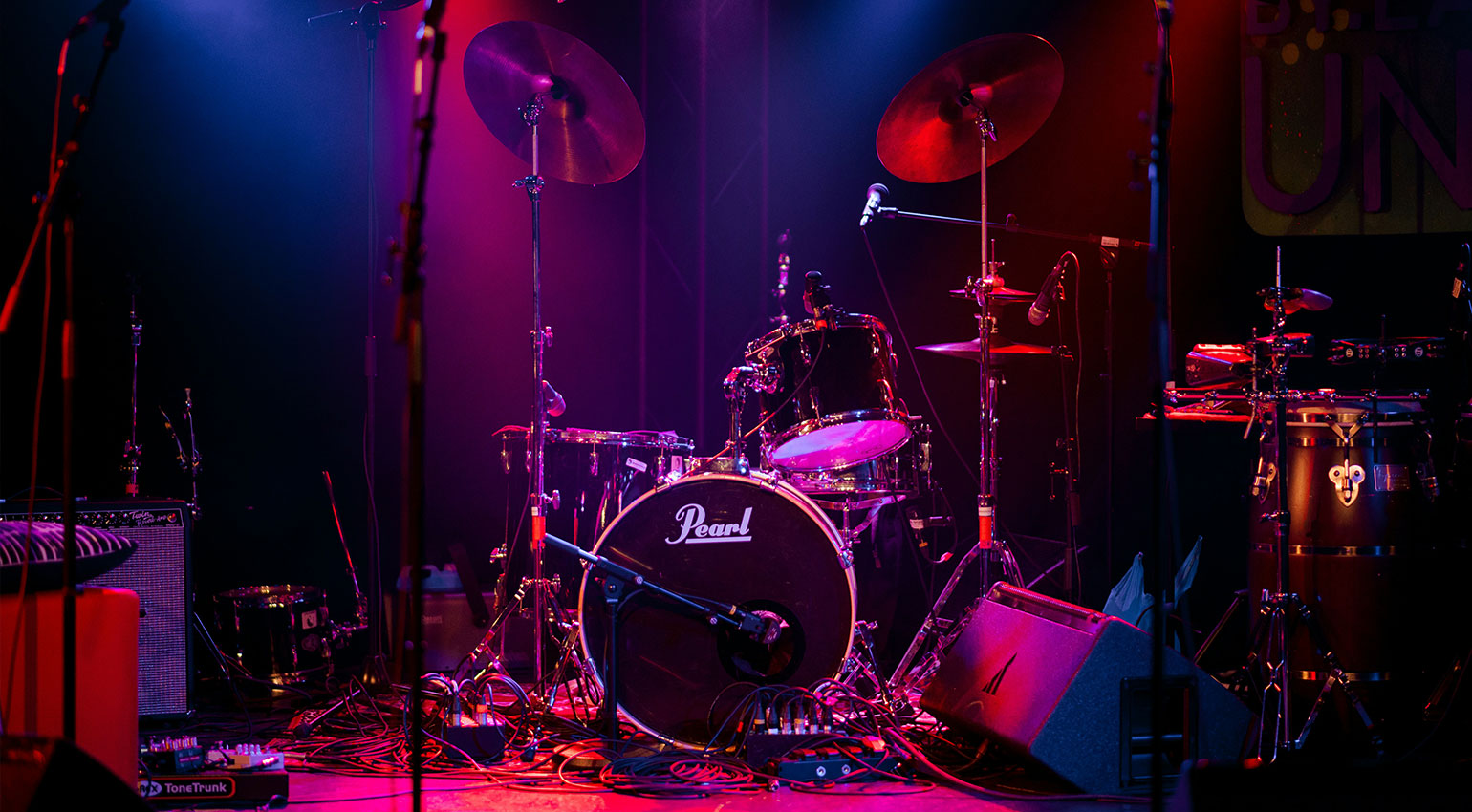
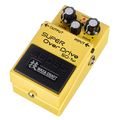
 Boss SD-1W Super Overdrive
Boss SD-1W Super Overdrive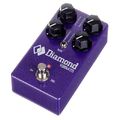
 Diamond Vibrato
Diamond Vibrato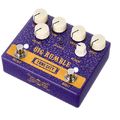
 Tone City Big Rumble – Overdrive / Boost
Tone City Big Rumble – Overdrive / Boost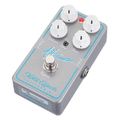
 Xotic Allen Hinds AH Booster
Xotic Allen Hinds AH Booster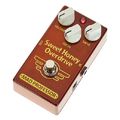
 Mad Professor Sweet Honey Overdrive Factory
Mad Professor Sweet Honey Overdrive Factory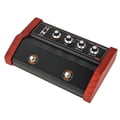
 Warm Audio Jet Phaser
Warm Audio Jet Phaser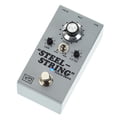
 Vertex Steel String MKII Overdrive
Vertex Steel String MKII Overdrive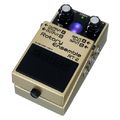

 Electro Harmonix Soul Food
Electro Harmonix Soul Food

 MXR Dyna comp 1976
MXR Dyna comp 1976
 Strymon Flint V2
Strymon Flint V2
 Ibanez TS9
Ibanez TS9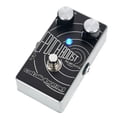
 Catalinbread Epoch Boost
Catalinbread Epoch Boost